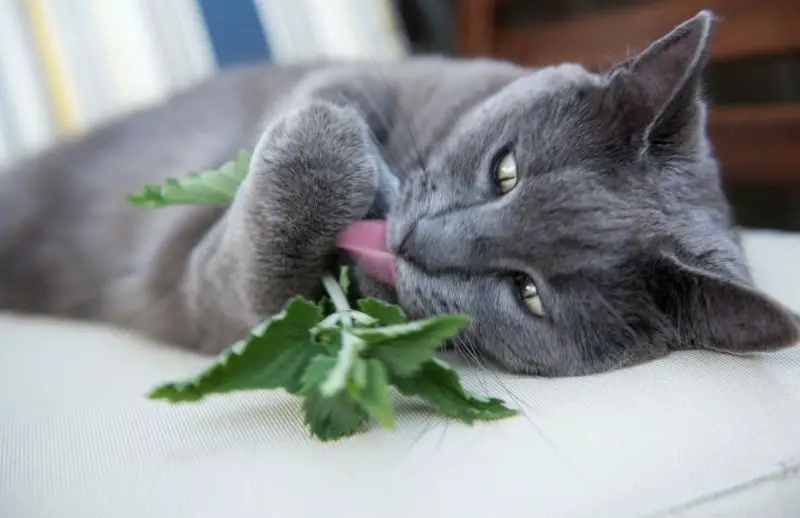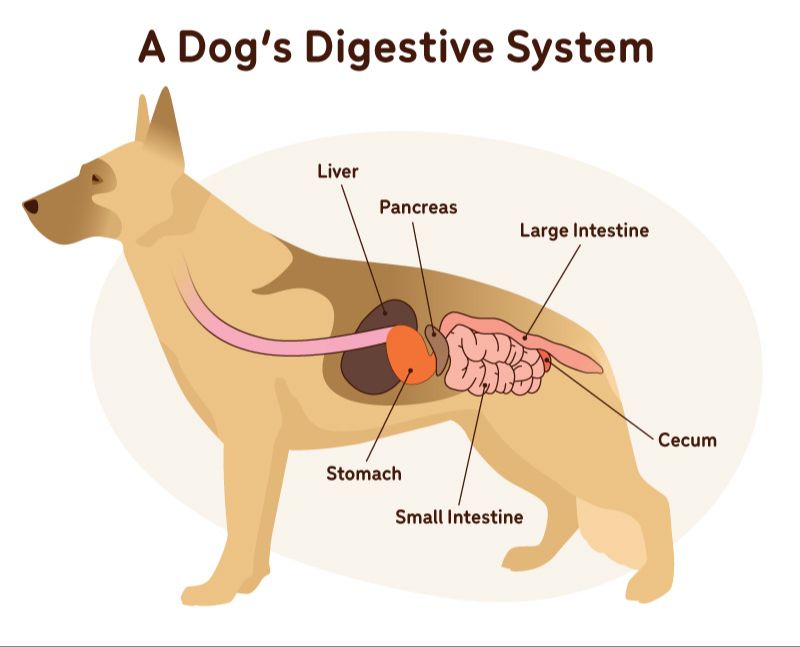Catnip is a mint herb from the Nepeta genus that contains a chemical compound called nepetalactone. When cats smell or ingest catnip, it binds to receptors in their brain and elicits a euphoric reaction, often making them roll around, rub against things, vocalize, and exhibit hyperactive behavior. Catnip can have a relaxing or stimulating effect on dogs depending on the individual. Some dogs may react with hyperactivity similar to cats after being exposed to catnip, while others become mellow. Catnip is not harmful to dogs in small amounts, though diarrhea is possible if they ingest too much.
https://fastesaletter.com/catnip-for-dogs-is-it-a-right-choice/.
What is Catnip?
Catnip, also known as catmint, is a flowering plant that belongs to the mint family (Lamiaceae). The scientific name for catnip is Nepeta cataria. Catnip contains a chemical called nepetalactone, which gives the plant its distinctive odor and is responsible for attracting cats.
Nepetalactone is an iridoid compound and essential oil found in the leaves and stems of catnip (Lichman et al., 2020). This organic compound is part of the terpenoids class and has a powerful effect on cats.
When cats sense nepetalactone, it activates their “happy” pheromone receptors. This causes them to exhibit playful behavior like rubbing, rolling, and circling around catnip plants or toys. The effects of nepetalactone on cats are akin to them acting as if they are “under the influence”. Catnip provides a temporary appealing high for domestic cats.
Catnip’s Effects on Cats
Catnip is well-known for inducing a euphoric and energetic reaction in cats when smelled or eaten. The active chemical compound in catnip that causes this reaction is called nepetalactone. When cats smell or ingest catnip, the nepetalactone binds to receptors in their nose and stimulates their brain, triggering the “high” that catnip is known for.
Typical reactions cats have to catnip include rolling around, flipping over, rubbing their face on the catnip source, meowing or growling, becoming very playful and energetic, and zoning out in a euphoric daze. Some cats may become overstimulated and hyperactive when exposed to catnip. The effects of catnip on cats usually last 5-15 minutes before wearing off.
Research indicates that 50-80% of cats respond to catnip by exhibiting these euphoric behaviors. The remaining percentage appear unaffected by catnip. The stimulating effects of catnip are hereditary and innate in cats. Kittens younger than 6 months old typically do not respond to catnip.
Catnip is safe for cats to enjoy in moderation. However, eating too much catnip can cause minor side effects like vomiting, diarrhea, and dizziness. It’s best to use small amounts of catnip at a time under supervision.

Overall, catnip induces an enjoyable, euphoric high for most cats that enhances their playfulness and energy briefly before wearing off naturally.
Catnip’s Effects on Dogs
While catnip acts as a stimulant in cats, causing behaviors like rolling, flipping, and rubbing, it typically has the opposite effect in dogs and acts as a sedative. The main active chemical that causes a reaction in cats is called nepetalactone, which binds to olfactory receptors in a cat’s nose and has a calming effect. However, nepetalactone does not affect dogs in the same way.
Some dogs may experience a brief excitation period after exposure to catnip, which can cause hyperactivity and anxious behaviors like excitability, jumping, and barking. This is likely due to the other volatile oils, flavonoids, and terpenoids present in catnip. However, this excitation phase in dogs is usually short-lived, lasting 5-15 minutes at most.
After this brief excitation, catnip will then act as a sedative in dogs, making them docile and calm. Most dogs will simply get drowsy and relaxed from catnip. Due to its calming properties, some owners use catnip intentionally for dogs with anxiety issues. However, eating too much catnip can cause lethargy and lack of coordination in dogs.
Overall, while catnip will not get most dogs “high” like it does with cats, it can cause a brief excitation and anxiety phase before acting as a sedative. Monitoring your dog closely after exposure to catnip is advised.
Can Catnip Cause Diarrhea in Dogs?
There is limited research on whether catnip can cause diarrhea in dogs. Catnip contains an oil called nepetalactone which is known to have a stimulating effect on cats, but does not affect most other animals in the same way. Dogs have a weaker response to nepetalactone compared to cats.
Some dog owners have reported diarrhea after their dogs ingested catnip. However, there have been no scientific studies conclusively linking catnip to diarrhea in dogs. Anecdotal reports indicate that some dogs may experience an upset stomach or loose stools after eating catnip, especially in large quantities. But many dogs can also consume catnip without any diarrhea or other side effects.
One small study found that dogs displayed reduced activity and increased water consumption after being exposed to catnip. While increased thirst could potentially lead to looser stools, the study did not specifically examine diarrhea. More research is needed to determine if catnip can be directly linked as a cause of diarrhea in dogs.
Overall, evidence is limited on catnip causing diarrhea problems for dogs. Some digestive upset is possible if a dog eats a large amount of catnip. But most healthy dogs are unlikely to experience diarrhea solely due to catnip, especially if they only ingest small amounts of it.
Reasons for Diarrhea

There are several common causes of diarrhea in dogs:
- Diet change – Switching your dog’s food too quickly can upset their stomach and lead to diarrhea. Gradual transitions over 5-7 days are recommended.
- Eating something new – Dogs explore the world with their mouth, and sometimes they eat things that disagree with their stomach. New foods, trash, and foreign objects can cause diarrhea.
- Stress/anxiety – Big changes in routine, a new home, separation, loud noises, and travel can all cause anxiety and diarrhea in dogs.
- Infection – Bacterial, viral, or parasitic infections often cause diarrhea as the body tries to flush out the invader. Common examples are parvovirus, salmonella, giardia, and hookworms.
Other less common causes include side effects of medication, intestinal disease, organ dysfunction, food allergies, and poisoning. Diarrhea can develop rapidly and lead to dehydration, so it helps to identify the cause.
Preventing Diarrhea
Diarrhea can often be prevented by taking some simple precautions:
Slowly introduce new foods – When changing your dog’s diet or introducing new foods, do so gradually over the course of 5-7 days. This allows their digestive system to adjust and reduces the chances of an upset stomach. Only give small amounts of the new food at first.
Manage stress – Stress is a common cause of diarrhea in dogs. Try to minimize stressful events like boarding, moving homes, new people or pets, loud noises, or changes in routine. Create a calm environment and stick to a consistent schedule when possible.
Regular vet checkups – Your veterinarian can monitor your dog’s health and may recommend probiotics or other supplements to support digestive health. Annual exams also keep vaccines up to date. Bring stool samples to check for parasites or infections that could cause diarrhea.
Keep your dog well hydrated and feed bland foods like boiled chicken and rice during periods of diarrhea. Probiotics or pumpkin may also help maintain digestive regularity. Avoid fatty, sugary, or spicy foods when your dog has a sensitive stomach.
Sources:
https://www.akc.org/expert-advice/health/doggie-diarrhea/
https://www.fallsroad.com/site/tips-resources-blog-baltimore-vet/2021/10/12/diarrhea-dogs
Treating Diarrhea
When a dog develops diarrhea, the first step is usually to withhold food for 12-24 hours to give the gastrointestinal tract a chance to rest (https://www.akc.org/expert-advice/health/doggie-diarrhea/). This fasting period allows inflammation to subside and often results in improvement of diarrhea. It’s important to make sure the dog has access to fresh water during this time.
After the resting period, a bland diet can help firm up stools. Boiled chicken or hamburger and white rice is a common choice. The bland food gives the digestive system a chance to recover. Only small amounts should be offered at first, with portion size gradually increasing over 3-5 days as stools return to normal (https://www.vet.cornell.edu/departments-centers-and-institutes/riney-canine-health-center/health-info/diarrhea).
Probiotics and supplements can also help restore gut health and regulate digestion. Giving a probiotic fortified with beneficial bacteria supports overall GI function and may ease diarrhea (https://www.fallsroad.com/site/tips-resources-blog-baltimore-vet/2021/10/12/diarrhea-dogs). Anti-diarrheal medications are another option but should only be used for 1-2 days to avoid masking an underlying issue.

When to See the Vet
Diarrhea in dogs that lasts for more than 1-2 days without improvement warrants a trip to the vet. Prolonged diarrhea can lead to dehydration, which can become life-threatening. According to Cornell University College of Veterinary Medicine, you should call your vet if loose stool persists for more than two days.
You should also bring your dog to the vet right away if there is blood or black, tarry stool present. Bloody diarrhea indicates inflammation, infection, or other serious issues in the colon or intestines that require veterinary attention. Veterinary Emergency Group advises not waiting and to go to emergency vet services immediately if you notice blood.
In addition to bloody stool, lethargy or lack of energy combined with diarrhea is another sign you need to get your dog to the vet promptly. Lethargy indicates your dog may be dehydrated or suffering from an underlying illness causing the diarrhea. Don’t wait to see if it improves – lethargy with diarrhea is an emergency situation.
Lastly, if your dog shows no signs of improvement after 48 hours on a bland diet recommended by your vet, you should follow up for further evaluation and treatment. Prolonged diarrhea risks dehydration and malnutrition, so additional interventions may be needed to get your pup back to normal.
Conclusion
In summary, while catnip is known for causing euphoric effects in cats, it typically does not cause any negative side effects like diarrhea when given to dogs in small amounts. The main active compound in catnip, called nepetalactone, does not appear to have the same effects in canines as felines. However, some dogs may experience diarrhea after eating catnip for other reasons like allergies or eating too much plant material. To prevent diarrhea, give only a small amount of catnip occasionally and monitor your dog’s reaction. If diarrhea develops, withhold catnip and see your vet if symptoms persist. Overall, catnip is generally safe for dogs, but be cautious until you know how your individual dog reacts to it.


